- Joined
- Oct 22, 2013
- Messages
- 8,597
- Reaction score
- 19,854
Hey everyone,
About a year ago there was a thread over at the Physician Scientist forum about elite school bias in MD/PhD admissions. This post is a more in-depth continuation of the data discussed in that thread, this time posted in Pre-Allo for visibility and because of discussions in recent threads about the importance of undergraduate prestige for admissions to elite MD programs.
In that thread, @Maebea posted a table showing the undergraduate institutions of ~3100 MD/PhD matriculants from 2010 - 2014 (the data comes from internal documents at the user's MD/PhD program). In this post I will present some graphs I have made using those and other data as well.
Proportion of MD/PhD Matriculants Coming from Top 30, 20, and 10 Undergraduate Institutions
According to U.S. News and World Report
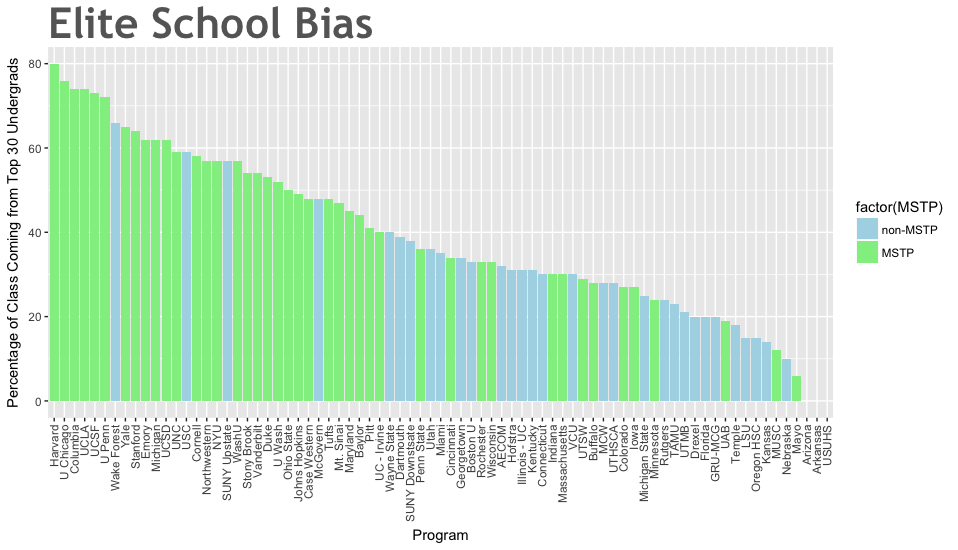
Top 5 Schools by Percentage of Class coming from Top 30 Undergrads
1. Harvard
2. U Chicago
3. Columbia
4. UCLA
5. UCSF
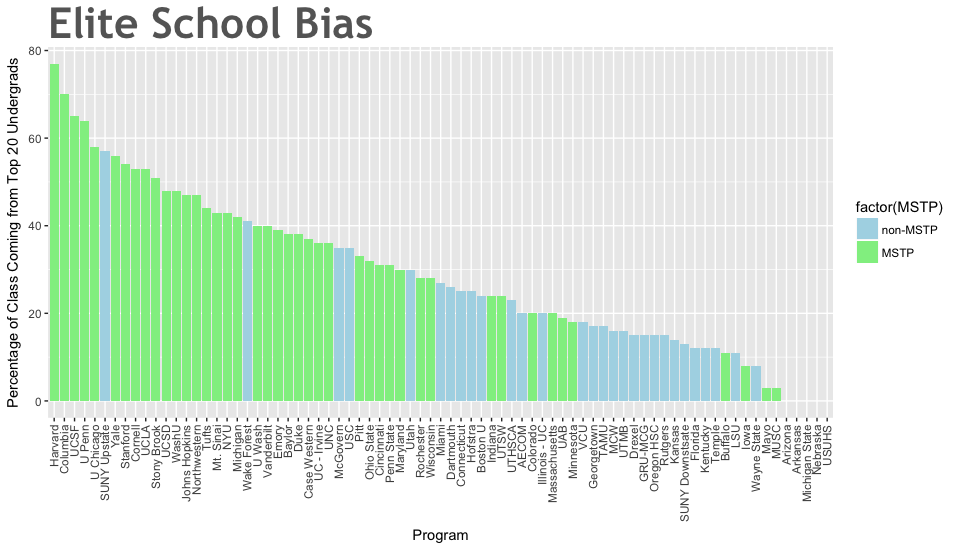
Top 5 Schools by Percentage of Class from Top 20 Undergrads
1. Harvard
2. Columbia
3. UCSF
4. U Penn
5. U Chicago
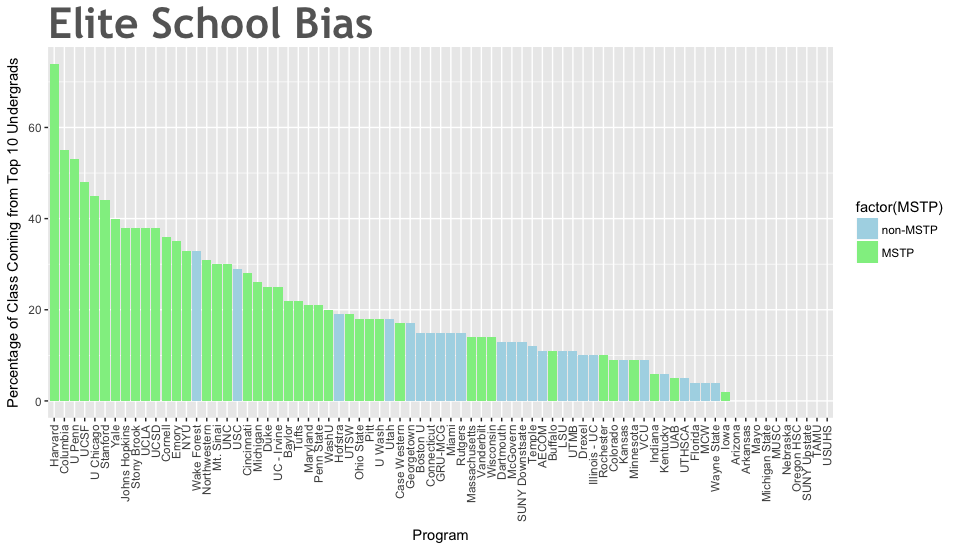
Top 5 Schools by Percentage of Class coming from Top 10 Undergrads
1. Harvard
2. Columbia
3. U Penn
4. UCSF
5. U Chicago
As is apparent, MSTPs (MD/PhD programs fully funded by the NIH) tend to have the most significant portion of their classes coming from top UG institutions. At least 24 programs admit half or more of their students from just the Top 30. Harvard is somewhat of an outlier with over 75% of its class coming from just the top 10 undergraduate institutions.
I thought it might also be interesting to see how "inbred" certain top programs were and how prevalent HYPSM grads are at each one. I wrote a script that reads in student directories from the program webpage and collects information on its students' undergrads. I used that to calculate the proportion of the program that comes from its own undergrad, as well as the proportion coming from just HYPSM alone. This data represents the past 8 years of matriculants at these programs. The top programs that do not appear either do not have a student directory or do not list their students' undergraduate institutions.

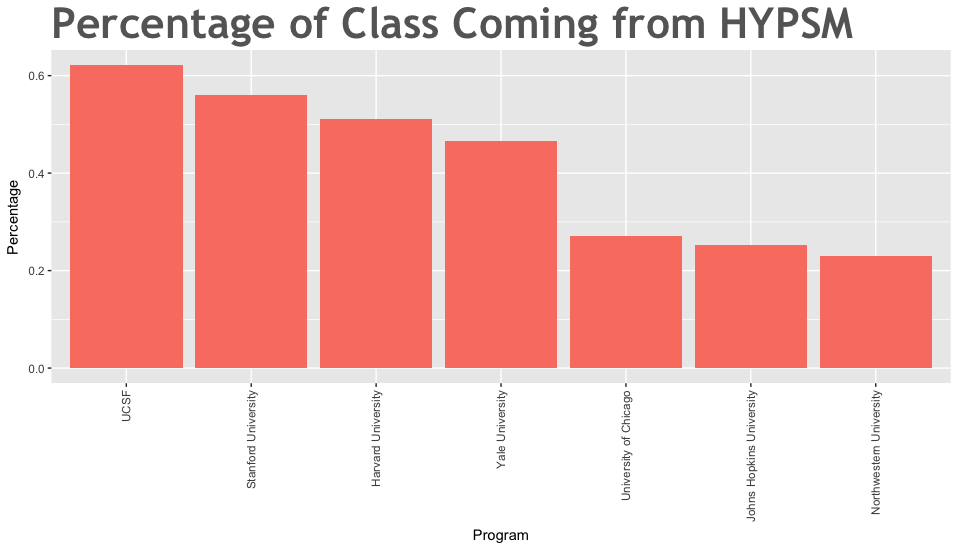
Using this same script and data I recalculated the proportion of the class coming from the top 30, 20 ,10 undergrads just for these schools (this time with data spanning 8 years as opposed to 4).
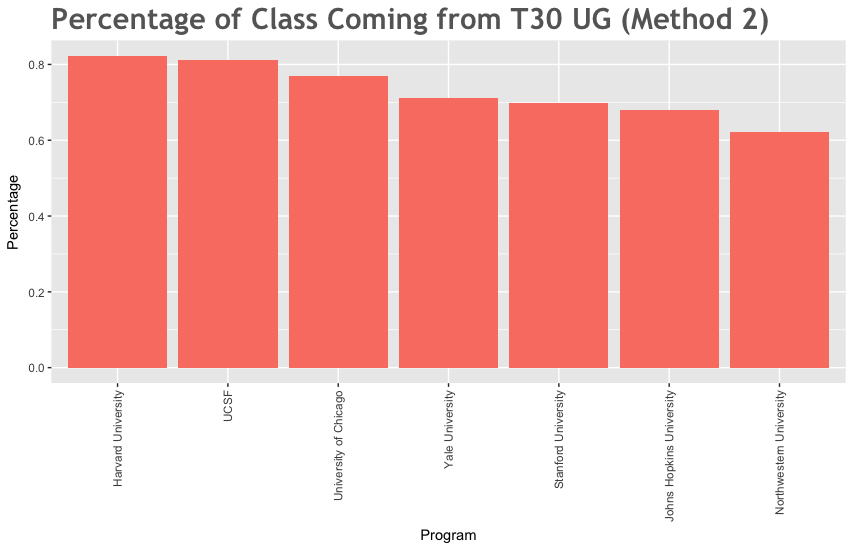
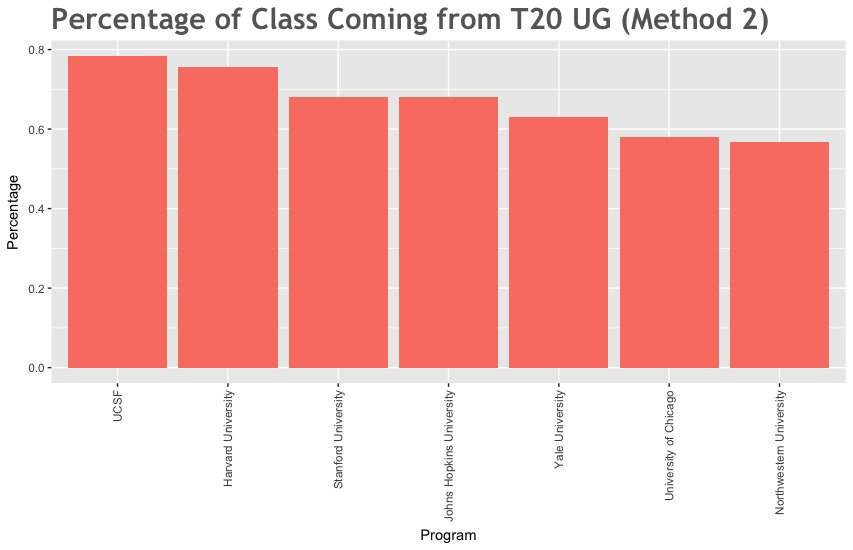

As you can see, the results do differ slightly from those in the 4 year matriculant data from the original elite school bias thread. When writing my script, the results for Harvard, JHU, and Stanford agreed with what I found tallying undergrads up by hand.
When I have time in the future I hope to correlate the inbreeding scores and proportions in each category to the USNWR ranking of the MD/PhD program.
Personally, I find it surprising how large the proportion of students just from HYPSM is at top MSTPs.
About a year ago there was a thread over at the Physician Scientist forum about elite school bias in MD/PhD admissions. This post is a more in-depth continuation of the data discussed in that thread, this time posted in Pre-Allo for visibility and because of discussions in recent threads about the importance of undergraduate prestige for admissions to elite MD programs.
In that thread, @Maebea posted a table showing the undergraduate institutions of ~3100 MD/PhD matriculants from 2010 - 2014 (the data comes from internal documents at the user's MD/PhD program). In this post I will present some graphs I have made using those and other data as well.
Proportion of MD/PhD Matriculants Coming from Top 30, 20, and 10 Undergraduate Institutions
According to U.S. News and World Report

Top 5 Schools by Percentage of Class coming from Top 30 Undergrads
1. Harvard
2. U Chicago
3. Columbia
4. UCLA
5. UCSF

Top 5 Schools by Percentage of Class from Top 20 Undergrads
1. Harvard
2. Columbia
3. UCSF
4. U Penn
5. U Chicago

Top 5 Schools by Percentage of Class coming from Top 10 Undergrads
1. Harvard
2. Columbia
3. U Penn
4. UCSF
5. U Chicago
As is apparent, MSTPs (MD/PhD programs fully funded by the NIH) tend to have the most significant portion of their classes coming from top UG institutions. At least 24 programs admit half or more of their students from just the Top 30. Harvard is somewhat of an outlier with over 75% of its class coming from just the top 10 undergraduate institutions.
I thought it might also be interesting to see how "inbred" certain top programs were and how prevalent HYPSM grads are at each one. I wrote a script that reads in student directories from the program webpage and collects information on its students' undergrads. I used that to calculate the proportion of the program that comes from its own undergrad, as well as the proportion coming from just HYPSM alone. This data represents the past 8 years of matriculants at these programs. The top programs that do not appear either do not have a student directory or do not list their students' undergraduate institutions.


Using this same script and data I recalculated the proportion of the class coming from the top 30, 20 ,10 undergrads just for these schools (this time with data spanning 8 years as opposed to 4).



As you can see, the results do differ slightly from those in the 4 year matriculant data from the original elite school bias thread. When writing my script, the results for Harvard, JHU, and Stanford agreed with what I found tallying undergrads up by hand.
When I have time in the future I hope to correlate the inbreeding scores and proportions in each category to the USNWR ranking of the MD/PhD program.
Personally, I find it surprising how large the proportion of students just from HYPSM is at top MSTPs.

